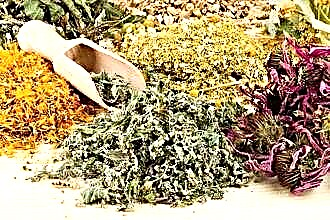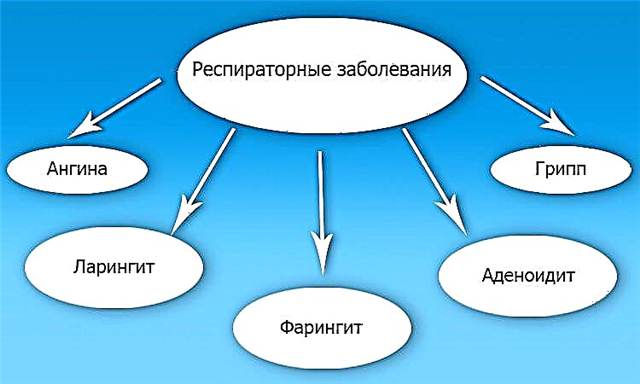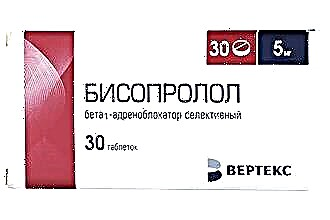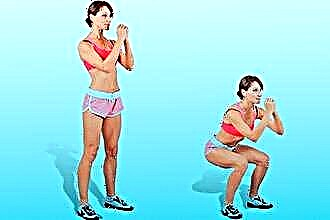From the point of view of the transfer of the drug to the affected area of inhalation with angina in children using nebulizers, they do not have any particular advantages over steam inhalation or gargling. Nevertheless, this method is much more convenient to use than its counterparts. If you use a compact model of a nebulizer, then even a young child is able to independently master the principles of using the device.
 In addition, creating an aerosol with a nebulizer is the safest technique. With hot steam inhalation over a container of solution or using a kettle, there is always a risk of thermal burns, as liquid may spill.
In addition, creating an aerosol with a nebulizer is the safest technique. With hot steam inhalation over a container of solution or using a kettle, there is always a risk of thermal burns, as liquid may spill.
This is doubly true for childhood, when the child is not yet quite able to coordinate body movements. We must not forget that a solution that is too heated up produces steam of a very high temperature, which, if inhaled, can burn the mucous membrane of the respiratory tract.
Inhalation with a nebulizer is free from the disadvantages listed above. Suspended air is not formed due to evaporation, but in other ways that do not raise the temperature to critical values. And the drug itself is always inside the device and will not spill out if handled carelessly.
Types of nebulizers
For the treatment of angina, different types of medicinal substances are used. The type of nebulizer is also selected depending on what drug is to be inhaled. According to the mechanism of air suspension formation, these devices are divided into three large classes:
- Compressor models. Here, the aerosol is obtained as a result of the air forced by the compressor into the chambers where the medicine is located under high pressure. The disadvantages of such a nebulizer are its large size, noise generated during operation, and the need for constant power supply from the network. But these models also have a significant advantage - due to the simplicity of the design, all types of drugs can be used here (only essential oils are a partial exception for some compressor models).
- Ultrasonic nebulizers. Suspended air in such devices is formed by exposing the solution to ultrasonic waves. These vibrations of the air, as it were, "whip up" the liquid, converting it into an aerosol form. Such models work completely silently and are small in size, allowing them to be carried in a pocket. But some types of drugs cannot be used in ultrasound nebulizers. Sound waves heat a liquid medium, and some pharmacological compounds lose their molecular structure when exposed to temperature.
 Membrane nebulizers. The principle of operation of the device here is based on the supply of a drug solution to a vibrating membrane inside the nebulizer. This membrane has a large number of microscopic holes. Passing through them, the liquid turns into an aerosol. These models are compact and do not raise the temperature of the drug when spraying. But membrane nebulizers are distinguished by their increased cost, and in addition, drugs with increased density or solid microparticles cannot be used here - they clog the holes in the membrane.
Membrane nebulizers. The principle of operation of the device here is based on the supply of a drug solution to a vibrating membrane inside the nebulizer. This membrane has a large number of microscopic holes. Passing through them, the liquid turns into an aerosol. These models are compact and do not raise the temperature of the drug when spraying. But membrane nebulizers are distinguished by their increased cost, and in addition, drugs with increased density or solid microparticles cannot be used here - they clog the holes in the membrane.
Ready-made pharmacological agents
Antibiotics
Angina, or tonsillitis, is an inflammatory lesion of the pharyngeal tonsils, which is almost always bacterial in nature. This means that to get rid of the cause of the disease, it is necessary to use drugs specifically designed to fight bacteria.
Important! Antibiotics for angina in children are always prescribed - this is the basis for the treatment of this pathology and a guarantee of preventing complications.
For inhalation with a nebulizer, gentamicin and Fluimucil-antibiotic IT are used. But they cannot be used in ultrasonic nebulizers. These drugs break down when the temperature rises.
Antiseptics
Antiseptic agents are also designed to suppress bacterial infection, but their effect is not so strongly pronounced and does not have specificity, therefore, such drugs are not formally classified as antibiotics. Unlike antibiotics, antiseptics can be used in all types of nebulizers. For nebulizer inhalations, the following are used:
- chlorophyllipt solution;
- dioxidine solution;
- furacilin solution.
Anti-inflammatory drugs
 An infectious lesion is always associated with tissue inflammation. With angina, the mucous membrane of the throat and tonsils is covered by inflammatory reactions. In order to alleviate the condition of the child, it is necessary to reduce the intensity of the inflammation. This is achieved with the use of nebulizer inhalations of non-steroidal anti-inflammatory drugs.
An infectious lesion is always associated with tissue inflammation. With angina, the mucous membrane of the throat and tonsils is covered by inflammatory reactions. In order to alleviate the condition of the child, it is necessary to reduce the intensity of the inflammation. This is achieved with the use of nebulizer inhalations of non-steroidal anti-inflammatory drugs.
It uses Cromohexal, which has both an antihistamine effect, or Rotokan - an extract of medicinal herbs from pharmacy production. For anti-inflammatory drugs, there are no restrictions on nebulizer models.
Home remedies
Mineral water
The inflamed and irritated mucous membrane of the tonsils requires softening and moisturizing. This will improve the condition of the child, reduce the severity of the sore throat and help gently wash away the purulent deposits on the surface of the tonsils. Inhalation with waters such as Essentuki or Narzan is carried out 5-6 times a day and even more often. The liquid does not need to be additionally heated before filling the nebulizer, but make sure that the water used for inhalation does not contain carbon dioxide bubbles. Mineral Waters are sprayed with all types of nebulizers.
Soda-salt solutions
Baking soda and kitchen salt can soften and disinfect sore throats. In addition, soda suppresses the too intense cough reflex, which occurs with angina in children due to the spread of infection down the bronchial tree. The standard recipe for such a solution includes:
- 1 large spoonful of kitchen salt (can be replaced with sea salt, but not iodized);
- 1 large spoonful of baking soda
- 10 drops of iodine.
Mix the ingredients in 1 liter of water and make sure the salt and baking soda are completely dissolved. This solution is used in all types of nebulizers with the exception of membrane nebulizers.
Important! Do not exceed the specified amount of soda dissolved in water. With an increase in dosage in children, side effects are possible in the form of bowel dysfunction.
Homemade phytopreparations
Infusions and decoctions of medicinal herbs are useful for angina in children as an additional therapy. These solutions have anti-inflammatory, emollient, moisturizing and even antibacterial properties. Medicinal plants that are most often used for inhalation for angina are:
- St. John's wort perforatum;
- oregano;
- yarrow noble;
- medicinal calendula;
- sage;
- oak bark;
- field horsetail;
- raspberry leaves;
- Linden blossom;
- silver cinquefoil;
- calamus and licorice roots;
- elderberry flowers;
 eucalyptus leaves, etc.
eucalyptus leaves, etc.
The standard amount of a phytopreparation for the preparation of an inhalation solution is 1 tablespoon per 0.5 l of water. The medicinal plant must be boiled in a small container, and then let the liquid cool down on its own to room temperature.
Strain the infusion through cheesecloth and then pour it into the inhaler. Phytopreparations are not used in membrane nebulizers - solid microparticles that remain even after very thorough filtration will clog the holes.
Other drugs
For angina in children, nebulizer inhalations are used with other classes of drugs:
- bronchodilators;
- mucolytics;
- glucocorticoids, etc.
But these pharmacological agents are prescribed only if the inflammation of the tonsils is associated with other pathologies. For example, angina in children is sometimes combined with broncho-obstructive and allergic disorders, autoimmune diseases, etc. In these cases, the decision to start inhalations with one or another drug is made by an ENT specialist.
Nebulizer inhalation rules
The standard dosage of the drug for inhalation administration for angina depends on the age of the child and is:
- up to 2 years - 1 ml for 1 procedure;
- from 2 to 6 years old - 2 ml for 1 procedure;
- from 6 years old - 3 ml for 1 procedure.
The volume of the nebulizer chamber is always larger than the recommended volume of the drug. Moreover, there must be at least 5 ml of liquid in the chamber before inhalation. Therefore, when refueling a nebulizer, it is necessary to put a medicine in it, in an amount corresponding to the age of the child, and then add it to 5 ml with saline.
When treating angina, inhale the aerosol by mouth, without using any masks. Explain to your child that after inhaling, you need to hold your breath for 2-3 seconds, and then slowly exhale through your nose.
 Important! You need to breathe evenly and calmly, without trying to take too deep breaths - in children, this can lead to reflex bronchospasm.
Important! You need to breathe evenly and calmly, without trying to take too deep breaths - in children, this can lead to reflex bronchospasm.
One inhalation procedure is performed until the drug is completely consumed in the nebulizer chamber. This usually takes about 10 minutes. After inhalation, the nebulizer must be disassembled and washed under hot water and soap. The device is sterilized on a weekly basis either with the help of special devices or with the use of disinfectants.

 Membrane nebulizers. The principle of operation of the device here is based on the supply of a drug solution to a vibrating membrane inside the nebulizer. This membrane has a large number of microscopic holes. Passing through them, the liquid turns into an aerosol. These models are compact and do not raise the temperature of the drug when spraying. But membrane nebulizers are distinguished by their increased cost, and in addition, drugs with increased density or solid microparticles cannot be used here - they clog the holes in the membrane.
Membrane nebulizers. The principle of operation of the device here is based on the supply of a drug solution to a vibrating membrane inside the nebulizer. This membrane has a large number of microscopic holes. Passing through them, the liquid turns into an aerosol. These models are compact and do not raise the temperature of the drug when spraying. But membrane nebulizers are distinguished by their increased cost, and in addition, drugs with increased density or solid microparticles cannot be used here - they clog the holes in the membrane. eucalyptus leaves, etc.
eucalyptus leaves, etc.

